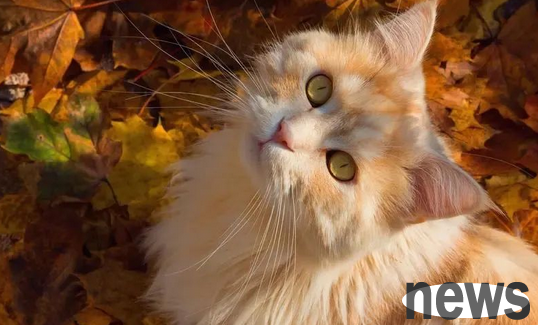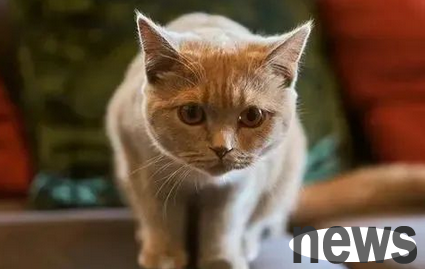What is cat diabetes insipidus? Directal insipidus is an extremely rare disease in cats. The most obvious symptoms of cat diabetes insipidus are excessive urination and excessive thirst, which is caused by irregular production or reaction of ADH (an...
What is cat diabetes insipidus?
Directal insipidus is an extremely rare disease in cats. The most obvious symptoms of cat diabetes insipidus are excessive urination and excessive thirst, which is caused by irregular production or reaction of ADH (anti-diuretic hormone). ADH is usually produced in the hypothalamus of the brain and is stored in the pituitary gland. Without normal antidiuretic hormone production and reaction, the kidneys are unable to reabsorb water from the blood, forcing cats to over-urinate and drink more water to make up for it.
Diabetes insipidus should not be confused with more common diabetes insipidus in cats. Diabetes insipidus and diabetes have symptoms of excessive thirst and excessive urination, but the causes of these symptoms vary, including treatment options.

Dialog insipidus comes in two forms:
Central diabetes insipidus (CDI): the hypothalamus does not produce any or sufficient ADH.
Neutronic Diabetes Insipidus (NDI): The kidneys have poor responses to diuretic hormones.
Your veterinarian will want to rule out any other conditions before treating diabetes insipidus. Fortunately, some types of diabetes insipidus are treatable and many cats can live a normal, healthy life.
Symptoms of cat diabetes insipidus
The most common symptoms of cat diabetes insipidus may include:
1, thirst
2, excessive urination
3, increased urinary and frequent urination
4, dehydration
5, decreased appetite
6, weight loss
7, possible neurological abnormalities (seizures, dysdirectional and incoordinated movements)
Causes of cat diabetes insipidus
There are two main causes of cat diabetes insipidus that can be treated, depending on the cause.
Central diabetes insipidus: A disease that occurs when the brain (especially the hypothalamus) cannot secrete enough antidiuretic hormones, or the pituitary gland cannot store antidiuretic hormones normally. Cats with CDI are often middle-aged and elderly pets.
Central diabetes insipidus in cats may be caused by congenital defects, head trauma (such as a car accident or injury), cancer in specific parts of the brain, or unknown causes.
Netherogenic Diabetes Insipidus (NDI): A disease that occurs when the kidneys cannot respond appropriately to antidiuretic hormones secreted by the brain. There are many reasons for NDI in
Acquired cats, and there is no known breed, age, or gender that tends to be secondary NDI. Causes of acquired NDI include:
1, drugs
2, diseases such as Edison's disease, Cushing's disease, or uterine pus
3, kidney damage, such as infection, inflammation, urethral blockage, or chronic kidney disease
4, liver disease
5, hypercalcemia
6, electrolyte abnormalities
7, Leptospirosis infection
8, hyperthyroidism
9, idiopathic (unknown)

If a cat is diagnosed with NDI, the veterinarian will want to treat the underlying disease, if possible, to reverse the condition.
How a Veterinarian diagnoses cat diabetes insipidus
When diagnosing cat diabetes insipidus, your veterinarian will start with a physical examination and a wide range of medical history. They will want to do the same lab work and tests, which are also to identify common (but vague) symptoms of cats’ excessive urination and excessive thirst. This laboratory work may include:
1, blood chemistry
2, whole blood count
3, urine culture analysis
4, corticotropin stimulation test
5, low-dose dexamethasone inhibition test
6, serum bile acid
7, thyroid function examination
This level of cat laboratory work will help rule out more common diseases such as kidney disease, hyperthyroidism, or diabetes.
It is worth noting that a veterinarian once conducted a water deficiency test to diagnose cat diabetes insipidus. However, this test has left cats terminally ill — especially those with other serious illnesses. Due to the risks shown in previous cases, the test is largely unsuitable for diagnosing diabetes insipidus in cats. Treatment of
Cat Diabetes Insipidus Treatment will depend on whether the cat is diagnosed with CDI or NDI type diabetes insipidus.
For cats diagnosed with CDI, they can continue to take desmopressin throughout their lives to relieve symptoms. It is important that they have access to water 24/7 and can urinate freely. The veterinarian may recommend additional supportive treatment options.
Pet parents should monitor cats treated with desmopressin for signs of hyperhydration, including symptoms such as vomiting and diarrhea, dyspnea or changes in mental state.
For cats diagnosed with NDI, it is curable if the veterinarian is able to treat the main underlying disease. Remember that unknown NDI cannot be cured and can only be reversed after the primary disease is determined and treated. If the underlying disease is chronic, it can also trigger a recurrence of NDI.
Medication for cat diabetes insipidus
Veterinarians will test a drug called desmopressin. This drug is a synthetic version of antidiuretic hormone that can replace it. Prior to administration, the urine osmotic pressure, i.e. the number and concentration of dissolved particles in the urine, will be measured before the drug is introduced. After administration, in the cat's system, the pet parents will be asked to measure the cat's urine volume and water intake over a few days and continue to monitor its water and urinate. Once the pet parent has collected urine samples, the veterinarian will re-examine the urine test.
The significant reduction in water intake and urine concentration exceeding 50% was consistent with the CDI diagnosis.
Cats with NDI virus will not get better (that's why NDI virus is suspected), and more tests may be necessary.
Advanced imaging, such as MRI and CT scans, can also be used to help veterinarians evaluate cancer, lesions, or trauma in the brain.. The recovery of
cat diabetes insipidus and the prognosis of
diabetes insipidus are usually good, depending on the underlying disease.
NDI can be cured, while CDI is usually not cured unless it is due to trauma or just temporary.
If the pet owner can control the side effects of thirst and urination, a cat with some form of diabetes insipidus can live a relatively normal life.
Cats with diabetes insipidus, especially those without treatment, must always have water to drink. Otherwise, severe dehydration, coma and death may occur.
For pets taking desmopressin or other medications, they will most likely require regular laboratory tests to assess renal function, urine concentration, and electrolytes.